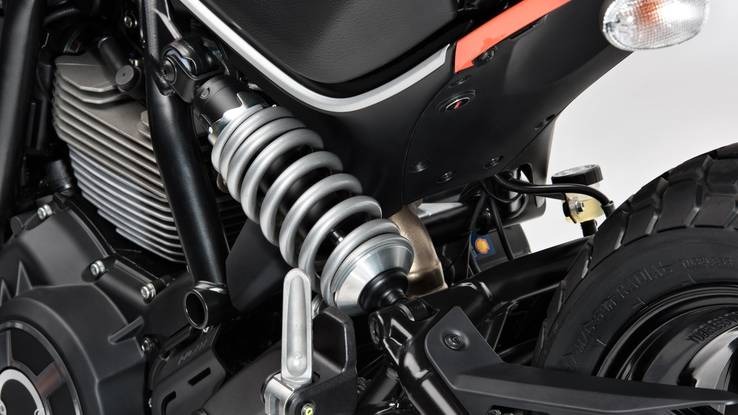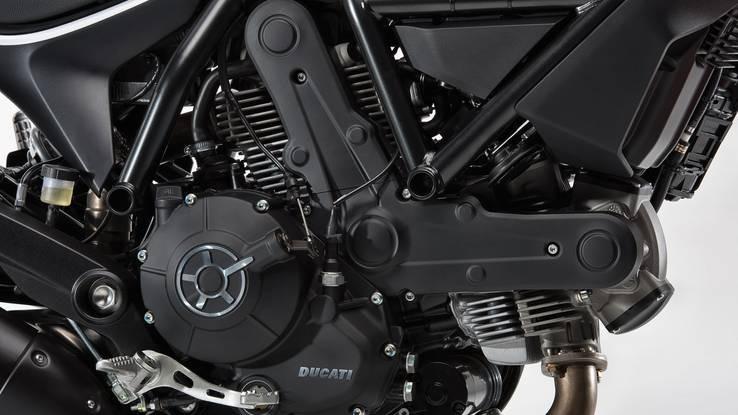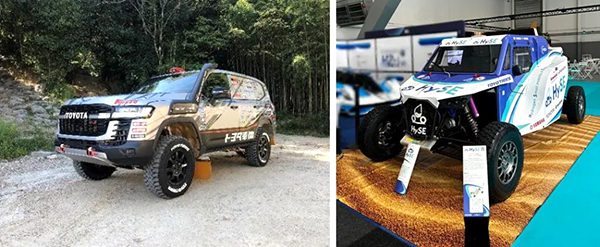Now you, yes you, can own a real Ducati for just $ 7,995!
Remember the Ducati Scrambler from last year? 800cc L-Twin, you sat on it like an old dirt bike and it only cost $ 8,995? It was aimed at “younger” riders. Well, now Ducati is aiming at even younger riders than that with the Scrambler Sixty2, which has half the displacement and costs a thousand dollars less.
“Motorcycle demographics are not getting any younger,” said Jason Chinnock, Ducati’s CEO in North America.
Ducati sold 16,000 Scrambers when the Scrambler was introduced last year — that’s a big figure in the motorcycle world.
“It was a tremendous success for us,” said Chinnock. “It was the first time Ducati has had a bike in the top 10 of global sales over 500cc. We’re number 10 but hey, it’s a start.”
The new Sixty2 is meant to be even more accessible than that. In addition to the displacement, it’s 6.5 pounds lighter, with higher handlebars, a larger fuel tank (3.7 gallons vs. 3.57), higher mirrors, a new steel tube rear swing arm, a round LED headlamp and a black silencer on the exhaust.
The engine is the same air-cooled L-twin found in the larger Scrambler (itself derived from the Monster), but sleeved down to 399cc in this application, half the displacement of the Scrambler introduced last year. With Desmodromic valve actuation, it makes 40 hp at 8,750 rpm and 25 lb-ft of torque at 7,750.
“Torque is what you use when you’re riding around town,” Chinnock pointed out.
The engine sits in the same twin upper spar steel trellis frame as the Scrambler. The Sixty2 has 24 degrees of rake and 112 mm of trail. Front fork is a traditional stanchion Showa 41 mm and the rear end is held up by a Kayaba monoshock with adjustable spring preload in case you decide to carry a passenger.

That’s a a Kayaba monoshock with adjustable spring preload in case you decide to carry a passenger.
What’s It Like To Ride? It’s easy to ride and lots of fun. As Chinnock said, around town between stop lights, you have all the torque you need and, as long as you’re not racing someone to the next light, you’ll have all the horsepower, too.
But this is a beginner’s bike, so let’s look at things beginners want. At first, the transmission feels a little awkward: neutral is hard to find from a standstill and also sometimes while coasting down to a stop. On a beginner bike, neutral should be easier to find. After a while, we got the hang of clicking down the six-speed transmission shift lever as we approached a stop and found neutral fairly easily, but a beginner might have trouble. At least there’s a green “N” on the dial when you’re there. There is no gear indicator otherwise, which is another omission for a first motorcycle. Likewise, the tachometer circles the lower edge of the round gauge dial in a thin LCD strip, not as obvious as might be helpful to someone riding their first motorcycle. The turn signals are not self-cancelling, either — another shortcoming. The seat height might likewise be higher than a first-time rider would like, at 31.1 inches, though a low 30.3-inch seat is available.
But any rider, beginner or advanced, will have fun on this bike. Sure, you’ll notice the lack of displacement when you open up the throttle on the highway. You might even find yourself leaning forward to cut the wind and get the most out of those 399ccs. But the majority of the time, you’ll be enjoying the lower-end torque and leaning into corners with a grin. We rode all day in the Malibu hills west of Los Angeles.
On straight, flat Pacific Coast Highway, the Sixty2 held its own among the Range Rovers and Teslas of the Hollywood moguls. Cutting up into the winding two-lanes, we had fun leaning into corners. You can lean a lot further on this pseudo-dirt bike than you could on a cruiser, so much so that we slid our inside foot back with each turn to avoid scraping a boot toe. Before you really twisted the throttle, it felt just like the Scrambler 800 we rode last year. On an entry-level cruiser like the Indian Scout Sixty, we’d have scraped a lot of pegs in those same corners. The Pirelli MT 60 RS tires felt fine on asphalt corners, with flat-topped block tread patterns that held the pavement well. Again, most of the time, we were happy with the torque available on the tight, second-gear corners we rode through.
We even managed to find some dirt in the Santa Monica Mountains and tried a little off-road riding. In the dirt, you’ll be reminded that this is a hybrid of sorts, what used to be marketed as an enduro 40 years ago. You immediately sense the Sixty2’s 150-pound weight disadvantage compared to pure off-road machines. At 403 pounds wet, it’s a little harder to fling around than a real dirt bike of similar displacement like the Yamaha YZ450F, Honda CRF450R or KTM 450 SX-F. The tires are likewise made mostly for street grip, lacking the big bumps of knobby tires made for dirt. Nonetheless, we had a fun time on a short dirt jaunt in the Sixty2 and you can, too. It invites you to explore places you’d never consider on most other bikes. You can ride to the hills and then keep going when the pavement ends. At least for a little while.

The Ducati Sixty2 engine is a sleeved version of the bigger Scrambler’s L-twin, with 399 ccs.
Do I Want It? If we were choosing, we’d invest the extra $ 1,000 and get twice as much engine in the 800cc Scrambler. But buyers in this segment might not be able to do that. For them, the payments on a $ 7,995 Sixty2 could easily trump those of an $ 8,995 Scrambler. Or we might get a KTM 690 Duke for $ 8,999. Or go up another $ 1,300 and get a Ducati Hypermotard 796. Or heck, there are zillions of possible motorcycles out there. Suffice it to say that this is the least-expensive Ducati on the market now and certainly the least intimidating to ride. Remember, though, that the original Scrambler introduced in 1962 (Sixty2?) went all the way down in displacement to 50ccs. So we wouldn’t be at all surprised if there was an even cheaper Scrambler coming next year.




























